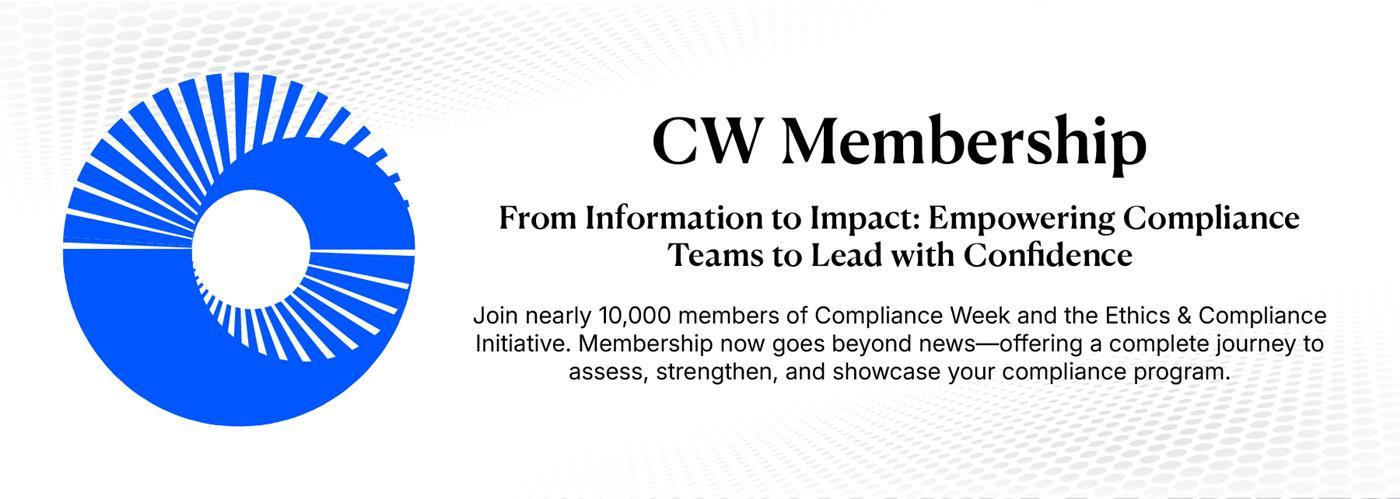- Home
-
News
- Back to parent navigation item
- News
- National Compliance Officer Day 2025
- Accounting & Auditing
- AI
- AML
- Anti-Bribery
- Best Practices
- Boards & Shareholders
- Cryptocurrency and Digital Assets
- Culture
- ESG/Social Responsibility
- Ethics & Culture
- Europe
- Financial Services
- Internal Controls
- Regulatory Enforcement
- Regulatory Policy
- Risk Management
- Sanctions
- Surveys & Benchmarking
- Supply Chain
- Third Party Risk
- Whistleblowers
- Opinion
- Benchmarking
- Certification
- Events
- Research
- Awards
-
CW Connect
- Back to parent navigation item
- CW Connect
- Sign In
- Apply
- Membership
Where will regulators turn following SVB, Signature Bank failures?
By  Aaron Nicodemus2023-03-17T15:57:00
Aaron Nicodemus2023-03-17T15:57:00
Small and mid-sized banks can expect more regulatory scrutiny in the aftermath of the collapses of Silicon Valley Bank (SVB) and Signature Bank, according to legal experts.
The time to prepare is now.
“The pendulum will swing to a much more aggressive, hyper-focused review by exam teams at individual banks,” said Patrick Hanchey, partner at law firm Alston & Bird. Banks should “take the bull by the horns and be proactive,” he said.
THIS IS MEMBERS-ONLY CONTENT
You are not logged in and do not have access to members-only content.
If you are already a registered user or a member, SIGN IN now.
Related articles
-
 News Brief
News Brief‘Textbook case of mismanagement’: Regs point blame at SVB for collapse
2023-03-28T20:26:00Z By Aaron Nicodemus
Banking regulators defended their supervisory actions and pledged to find answers as to what went wrong when discussing the factors leading to the failures of Silicon Valley Bank and Signature Bank before the Senate Banking Committee.
-
 Premium
PremiumLeadership, resource support key to compliance navigating bank turmoil
2023-03-27T18:59:00Z By Adrianne Appel
In sudden bank buyouts, the workload on compliance departments skyrockets as new customers are nearly instantly assumed by the purchasing bank. Experts share their take on managing the resulting risks.
-
 News Brief
News BriefFed details Custodia Bank membership rejection over risk deficiencies
2023-03-24T20:34:00Z By Aaron Nicodemus
The Federal Reserve Board further expounded on the risk management deficiencies it found at Custodia Bank as part of the digital-first bank’s application to become a member of the Federal Reserve System.
More from Regulatory Policy
-
 Premium
PremiumEU financial firms must prepare now for new rules on critical third-party arrangements
2025-12-15T18:04:00Z By Ruth Prickett
European banks and financial institutions must prepare now for stringent new rules on third-party suppliers.
-
 Article
ArticleTrump tirade against DEI turns to proxy advisors and shareholder proposals
2025-12-15T13:10:00Z By Adrianne Appel
President Donald Trump has directed the Securities and Exchange Commission (SEC) to review—and remove—any SEC rules or guidance that allow proxy advisors to influence business practices related to diversity, equity and inclusion (DEI) and environmental, social and governance (ESG) policies.
-
 Article
ArticleTrump takes aim at state AI laws, promises federal action on AI legislation
2025-12-12T18:25:00Z By Adrianne Appel
President Donald Trump has issued an executive order aimed at dismantling the artificial intelligence (AI) laws of California, Colorado and three other states with comprehensive laws.
- Terms and Conditions
- Privacy Policy
- Do Not Sell My Info
- © 2025 Compliance Week
Site powered by Webvision Cloud






